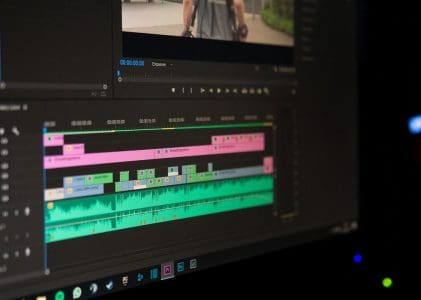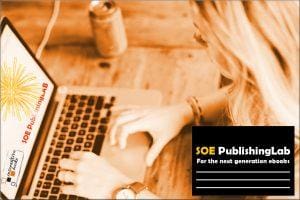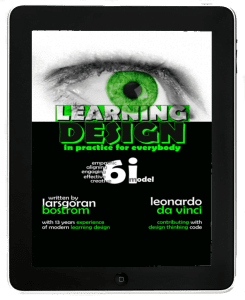 Listen to the story
Listen to the story
According to pioneers in UDL, the Center for Applied Special Technology, UDL is “a framework to improve and optimize teaching and learning for all people based on scientific insights into how humans learn” (CAST, 2018). From Accommodations to Design According to the National Center for Education Statistics, 19.4% of college students in the 2015-2016 school year reported having a disability. All courses are likely to include at least one student with a disability. Section 504 of the Rehabilitation Act of 1973 and Title III of the Americans with Disabilities Act require universities to provide accommodations to college students with registered disabilities.
However, this legal obligation is a minimum standard, which proponents of UDL argue is insufficient, because not all students with disabilities report their disabilities and “we have an ethical obligation to meet the needs of all students—regardless of documented disability—while maintaining high academic standards” (Chandler et al., 2017, p. 152).
In short, the increasing diversity of the student body in terms of backgrounds, experiences, social situations, and abilities, requires a broader and more flexible approach to learning design than common in previous generations of higher education. While UDL courses may still require accommodations for some students, scholars contend that UDL moves toward reducing or eliminating such accommodations by providing global solutions to individual challenges (Tobin and Behling, 2018). Not only does this create a more equitable environment for students with disabilities, but UDL practices also benefit nondisabled students.
For instance, instructors might reconsider whether a timed high-stakes exam is the only (or best way) for students to demonstrate their knowledge. If a summative assessment is possible that does not rely on time or space constraints (like a portfolio, presentation, or blog), the instructor will not need to make “accommodations” and will likely reduce other students’ test anxiety.
Take another common example: closed-captioning on videos aids a range of people—those with hearing impairments, second language learners, those viewing in noisy environments (think of closed captions on televisions in bars, restaurants, or crowded airports), and those who find a speaker’s accent challenging. Attributes of the video itself may make captions helpful; for instance, if the speaker talks very fast or if there is a lot of background noise in the recording. UDL also considers students motivations and preferences. For example, although in some courses the format is the assignment (for instance, in a business writing course, a key learning objective will be writing in the conventions of certain genres), often the nature of student artifacts is dictated by academic convention rather than careful consideration of the multiple ways students can validly demonstrate their knowledge.
UDL suggests student choice where possible, so that students are more motivated and have a feeling of performing their best work. Student preferences may also relate to their life outside of learning. For example, a student who is a working parent or a commuter may not have time to sit in front of a computer to view PowerPoint slides or a lecture outline. But if that same information can be provided with an audio file, that student can learn while doing household chores or driving to campus.
Framework for Universal Design for Learning
UDL calls for multiple means of engagement, representation, and action and expression. The following guidelines chart is from CAST. (For expansion on these categories see CAST website).
UDL in Practice
Although the UDL framework is complex, it does not assume every guideline can be met in every aspect of every course (Tobin and Behling, 2018). Instructors should think of UDL as a cumulative project: implementing small adjustments over many semesters progressively increases access for students. Scholars recommend that instructors begin with using UDL framework to address a recurring learning problem.
For instance, if students routinely have trouble understanding a concept that is explained by the instructor orally, an instructor might use class time for students to refine their understanding in small groups (multiple means of engagement) or provide students with a video with visual depictions (multiple means of representation). More general implementation of UDL guidelines can be simple. The following strategies are consolidated from Kennette and Wilson (2019); Lombardi, et al. (2018); Roberts, et al. (2011); Rogers-Shaw et al. (2018); Rose et al. (2006); Smith (2012); Cast (2018); and the Center for Universal Design in Education. Present information in more than one mode. Tobin and Behling (2018) call this the “plus-one” model.
Rather than striving to provide every possible mode, simply add one additional mode of presentation. Add text to visuals, and vice-versa. Allow students to access key information like syllabi in multiple formats, including both in print and online. Consider recording lectures or making PowerPoint presentations available online, as appropriate. Provide students with both written and spoken instructions. For both take-home assignments and in-class activities, communicate to students verbally and in writing. Assignment expectations can also be presented in multiple modes by providing students with grading rubrics, sample assignments, or checklists breaking down larger tasks. Ensure that students can access the formats you provide. Make sure videos are captioned or include transcripts, images include descriptions, and digital copies of course materials are formatted for use with technology such as screen readers.
The most recent version of Microsoft Office includes an accessibility checker under the review tab, which may catch major accessibility issues, and OALA recommends consulting the library for help in acquiring readable PDFs. Engage students in multiple types of activities. In addition to traditional lectures, allow students to engage with course material through formal note-taking, discussion, classroom response systems, small or large group activities, experiments or other hands-on activities, or online assignments (more suggestions for engaging students can be found at the ATL’s Interactive Methods teaching guide). Connect class activities explicitly to learning goals.
Lombardi, et al. (2018) suggest “using a four-column chart, listing lesson/module learning objectives, activities, instructional materials, course technologies and notes, assessments and measurement tools, and overall course objectives” (p. 399). Other strategies include beginning class by presenting a schedule for the day’s class session and explaining its relationship to broader course goals. Allow students some control over their own assignments. This may include allowing students to choose their own topics for a paper or project, writing tests that ask students to choose between multiple essay questions, or allowing students to choose between written and multimedia formats for final assessed projects. Use multiple forms of assessment.
This may include both group and individual work, tests that use a variety of formats (multiple choice, essay, short answer, etc.), papers, demonstrations, portfolios, web page design, projects, or presentations. As appropriate, provide multiple options for students to demonstrate their knowledge. For more information on assessment, see Assessing Student Learning and Teaching. Provide timely feedback. Give students adequate time to process, understand, and apply feedback to their learning. Just as students may need time to understand course material, they need time to understand feedback they receive on their work. Support community between students.
Classroom layout and practices impact community between students, but Roberts et al. (2011) also suggest use of email groups, social networking sites, or chat rooms to allow students to communicate outside of class. Other courses may benefit from optional study or review sessions, discussion groups, or out-of-class meetings (Rose et al., 2006). For suggestions for fostering community in online courses, see Socialization in Online Learning. Provide opportunities and time for students to reflect on their learning and set goals for themselves. Students benefit from self-reflection. Providing organized and structured time for self-reflection and independent goal-setting helps scaffold these practices and create more independent, goal-driven learners.
For example, some instructors, like Baylor’s Helen Harris, require students to add their own learning objective to a course and work with students on acceptable assessments for that objective.
Comment:
We have developed an excellent tool and format to put UDL in practice, interaQtive books, that are developed on our platform SOE PublishingLab. The format includes loads of interactive features, multimedia, AR and gamification, where the interaQtive book can be distributed and used directly on the iReaders device. Click below for more information:
Buy in Google Play Books
Sources to the story above:
Additional Resources Center for Applied Special Technology – Official UDL Guidelines
The ADA Coordinator at the Ohio State University – Fast Fact Guides References CAST (2018).
Universal Design for Learning Guidelines version 2.2. Retrieved from http://udlguidelines.cast.org.
Chandler, R., Zaloudek, J., & Carlson, K. (2017). How Do You Intentionally Design to Maximize Success in the Academically Diverse Classroom? New Directions for Teaching and Learning, 2017(151), 151-169. https://doi.org/10.1002/tl.20254
Kennette, L. N. & Wilson, N.A. (2019). Universal Design for Learning (UDL): What Is
It and How Do I Implement It? Transformative Dialogues: Teaching & Learning Journal, 12(1), 1-7. Lombardi, A., Mcguire, J., & Tarconish, E. (2018). Promoting Inclusive Teaching among College Faculty: A Framework for Disability Service Providers (Practice Brief). Journal of Postsecondary Education and Disability, 31(4), 397-413. Roberts, K. D., Park, H. J., Brown, S., & Cook, B (2011). Universal Design for Instruction in Postsecondary Education: A Systematic Review of Empirically Based Articles. Journal of Postsecondary Education and Disability, 21(1), 5-15. Rogers-Shaw, C., Carr-Chellman, D., & Choi, J. (2018). Universal Design for Learning: Guidelines for Accessible Online Instruction. Adult Learning, 29(1), 20-31. https://doi.org/10.1177/1045159517735530
Rose, D., Harbour, W., Johnston, C., Daley, S., & Abarbanell, L. (2006). Universal Design for Learning in Postsecondary Education: Reflections on Principles and their Application. Journal of Postsecondary Education and Disability, 19(2), 135-151. Smith, F. (2012). Analyzing a College Course That Adheres to the Universal Design for Learning (UDL) Framework. Journal of the Scholarship of Teaching and Learning, 12(3), 31-61. http://search.proquest.com/docview/1314310527/
Tobin, T., & Behling, K. (2018). Reach everyone, teach everyone: Universal design for learning in higher education. West Virginia University Press.
Opens in a new tab






